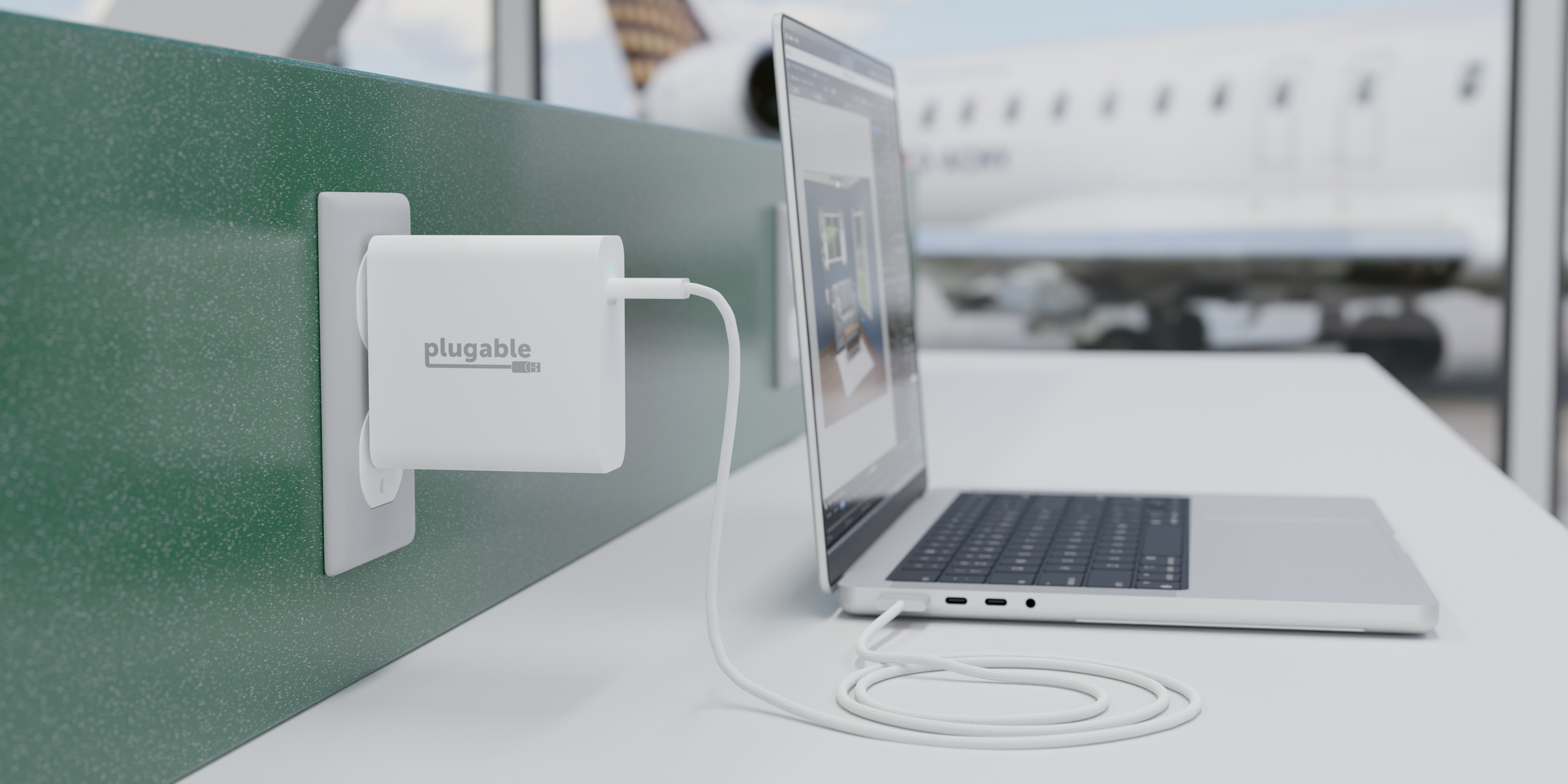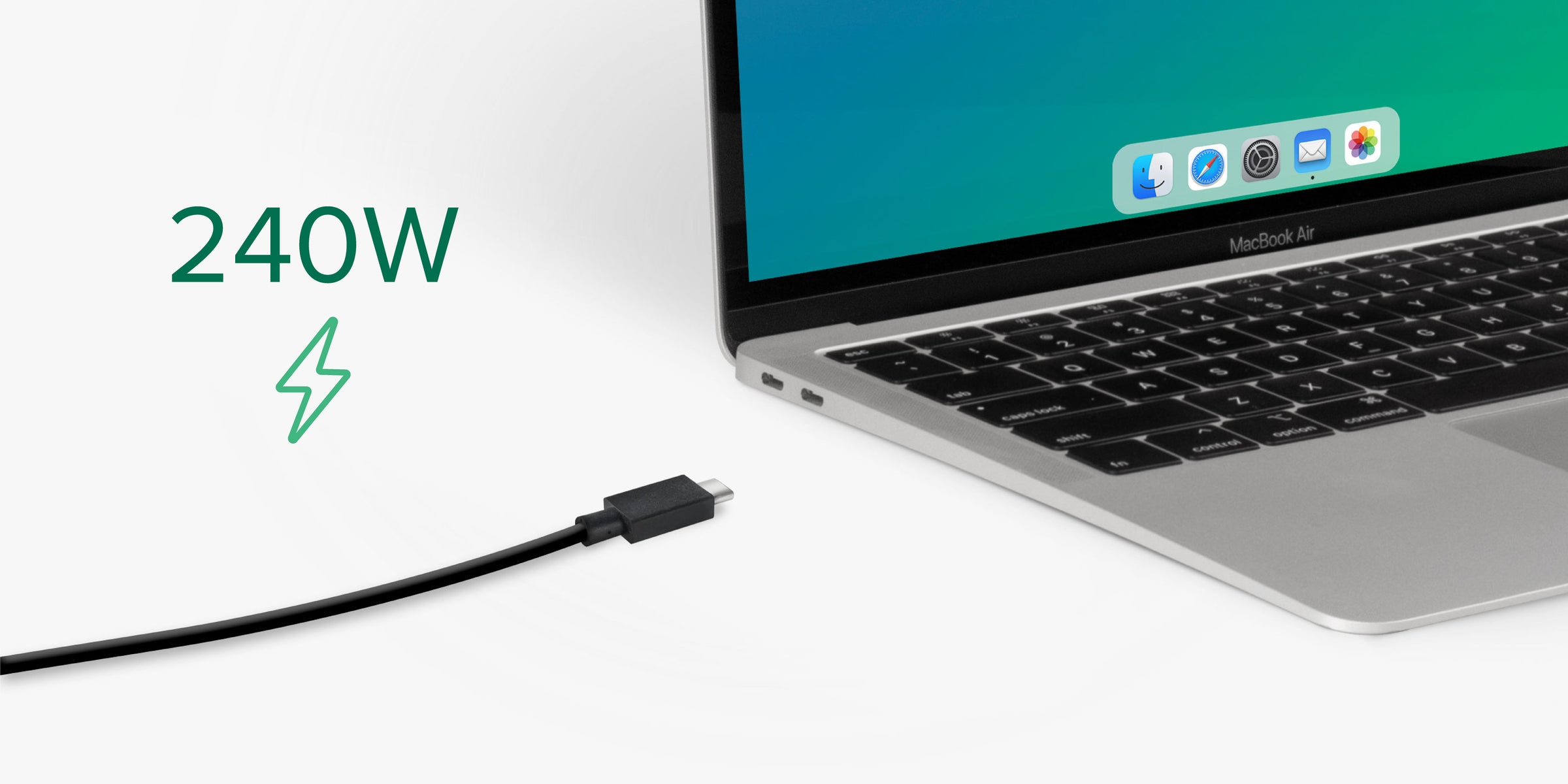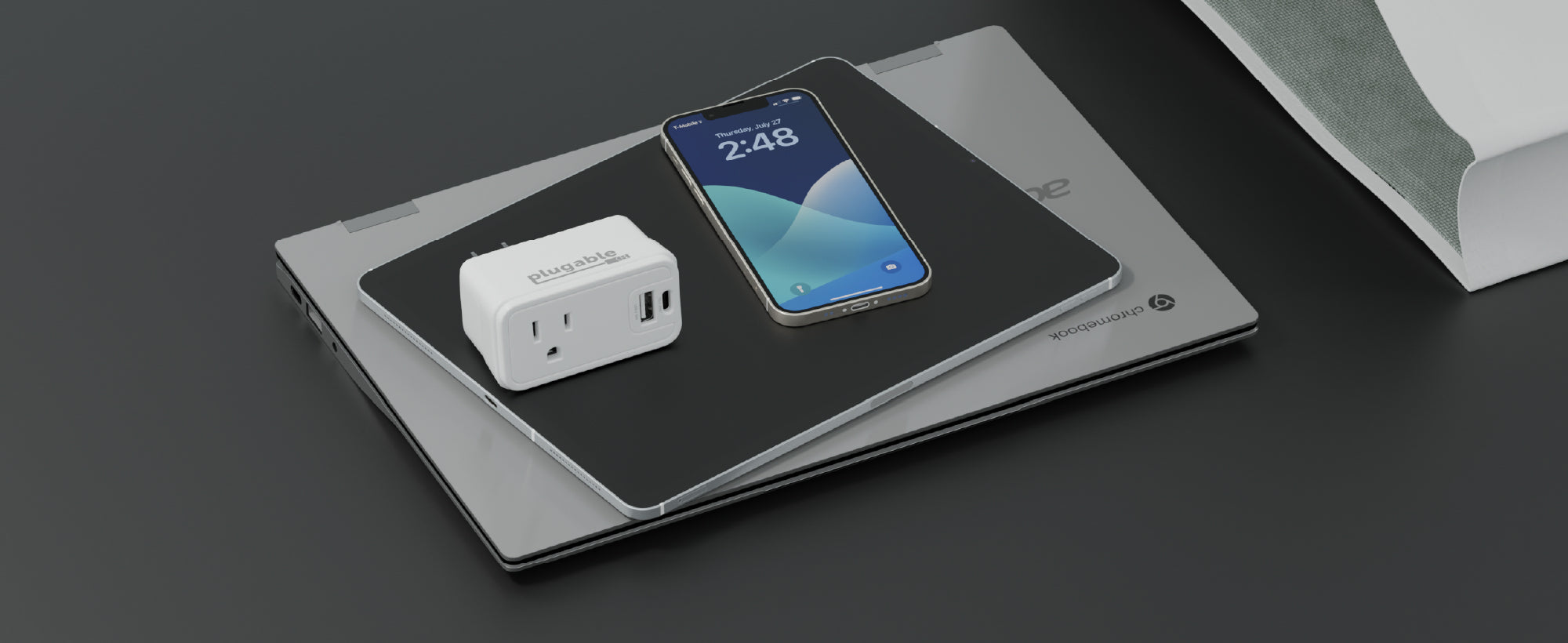USB Charges Everything
Bernie Thompson | September 10, 2024

Today, USB charging is a near-ubiquitous technology that powers everything from smartphones to laptops, but it comes with its share of frustrations. We all want faster charging speeds, fewer separate chargers to carry, and less cost and environmental waste.
In 2024, USB has established itself as the dominant charging standard, offering power and versatility for modern devices. But if you’re still dealing with a mix of USB-A and USB-C chargers, you’re not alone. The shift to USB-C hasn’t been seamless, and many consumers are still juggling both standards. Let’s explore why USB-A is still hanging around and how USB-C is changing the way we charge our devices—while also introducing its own set of frustrations.
The Power and Promise of USB-C

USB-C was designed to be a one-size-fits-all solution. Its ability to deliver up to 100W (or even 240W with the latest USB Power Delivery, USB PD 3.1) makes it capable of charging everything from phones to high-end laptops like the MacBook Pro and Dell XPS 13. This versatility means fewer chargers to carry and faster charging times for a variety of devices.
But in reality, things are still more complicated than that. Multi-port USB-C chargers may sound like a dream, but the inconsistent power offered across devices remains a common frustration. For instance, if you’ve plugged a laptop and phone into a multi-port USB-C charger, you might have noticed that neither charges as fast as expected. This happens because the charger has to split its available power between the devices, often inefficiently. And many adapters, hubs, and docks have USB-C ports with no charging capability at all.
Why USB-A is Still in the Picture

If USB-C is so powerful, why hasn’t USB-A disappeared completely? The reason is simple: cost and convenience. USB-C requires a bigger power supply for every port to live up to its promise. Many multi-port chargers still include USB-A ports because they’re less bulky in terms of power circuitry, less expensive to manufacture, and sufficient for less demanding devices. USB-A’s initial power output of 5W was enough for early devices, but it quickly became insufficient as smartphones and tablets demanded more power. In response, companies like Apple and Samsung introduced proprietary fast-charging methods, delivering 12W or more via USB-A. However, these proprietary methods often led to incompatibility issues and lots of pseudo-standards. USB-C is cleaning that up to a significant degree.
As USB-C becomes more common, we’ll likely see fewer USB-A ports, but for now, they remain a fixture in many multi-port chargers to keep costs down and designs compact.
USB-C Power Delivery: A Major Step Forward
The introduction of USB Power Delivery (USB PD) with USB-C was a game-changer. It allowed chargers to dynamically adjust voltage and current to match a device’s needs, meaning that one charger could now power everything from a smartphone to a laptop. However, this didn’t completely solve the problem of inconsistent charging across devices. Devices that don’t support USB PD still charge at a slower rate, even when plugged into a high-powered USB-C charger. This leaves users frustrated when their device doesn’t charge as quickly as expected.
Bulkiness and Heat: Trade-Offs with Expectations of High Power
Another downside of USB-C charging is the bulkiness of high-wattage chargers. While USB-C is supposed to simplify charging, many high-wattage USB-C chargers, like the 100W models used for laptops, are still fairly large and heavy—comparable in size to older laptop bricks. Additionally, overheating has become a concern as USB-C chargers deliver more power in a smaller package. Devices that pull a lot of power, like laptops, can generate significant heat, particularly when using third-party chargers not optimized for the device. This heat can shorten the charger's and the device's lifespan.
Compatibility: Challenging for a technology with so much legacy

USB-C charging has many subtle compatibility issues. You never know what you’re going to get with a USB cable – it might be data-only, causing charging to fail. Or it may support 3A but not have an e-marker signaling support for 5A, limiting charging to 60W or less. There’s no standard way to adapt a USB-C charging port to a USB-A device and guarantee full power. Many devices without their own battery need continuous power from USB, but many multi-port chargers don’t guarantee uninterrupted power as devices are plugged and unplugged, causing those devices to flicker or reboot. And some simple devices, like USB lights or fans, don’t follow any of the standards. They just start pulling power. Smart chargers that turn off ports to save power may not be woken by these devices, causing them to inexplicably fail to pull a charge.
USB-C Less Waste
With nearly all our stuff being charged by USB, having separate chargers for USB-A, USB-C, and proprietary systems has contributed to significant electronic waste over the years. Chargers, often tied to specific devices, quickly become obsolete as consumers upgrade to new models, leading to piles of unused adapters. To combat this, the European Union made a landmark decision to require all small electronics, including smartphones, to adopt USB-C as the standard charging port by this year. This move aims to reduce electronic waste by allowing consumers to use a single charger across multiple devices, eliminating the need for proprietary or outdated chargers. The simplicity of adopting one universal standard—USB-C—will benefit consumers and the environment. With fewer chargers needed, costs will drop, convenience will improve, and a significant reduction in e-waste will follow.
Clearly, things aren’t perfect. At the same time, USB-C is flexible and fixable, and it is the one charging standard that can rule them all to balance power, simplicity, and sustainability. Stay tuned to learn more about what’s coming with USB-C charging.
View Other Articles in Category
Related Articles
- Secure Charging for IT Teams and Field Workers
- At CES, Plugable Introduces Its Flagship Thunderbolt 5 Dock Of 2026
- Plugable Products Tested and Approved for the Apple M5 MacBook Pro
- Everyday Productivity Essentials with Plugable
- New Thunderbolt or USB-C Dock Not Working? Start Here (3 Quick Fixes + Display Troubleshooting)


Loading Comments